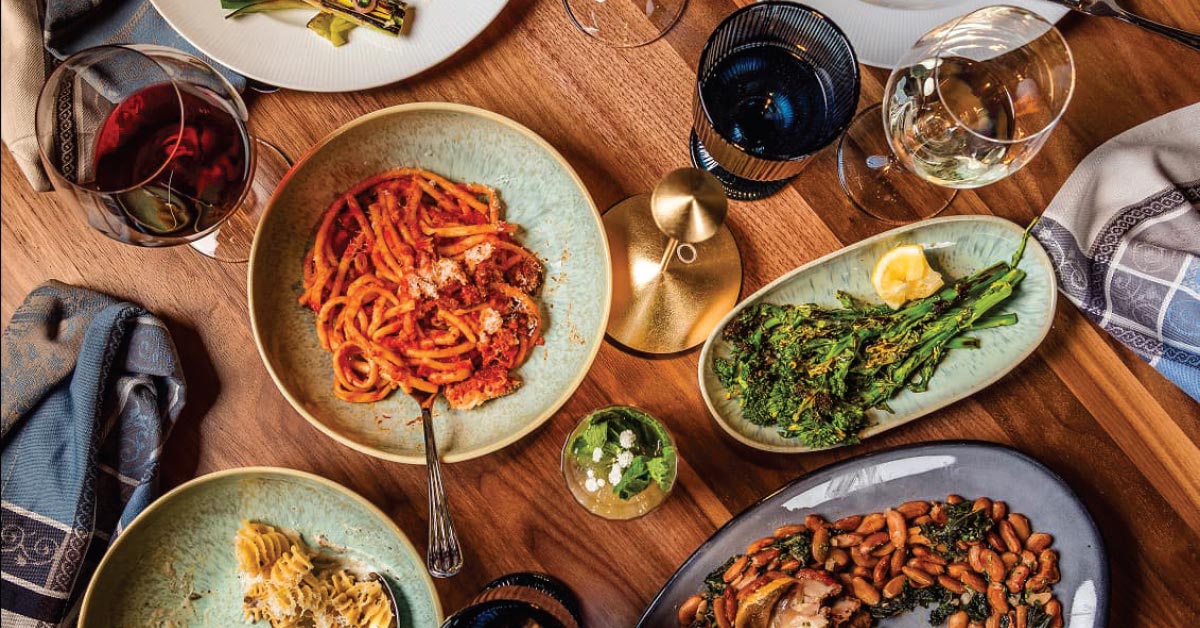My name is Alec. Since 2016, my wife (chef) Lindsay and I have owned and operated GROW Café + Bistro, a contemporary American brunch and lunch spot in downtown Saugatuck.
In 2022, we moved to a gratuity-free model. Yes, that’s right: No more tips. For a moment, I’d like to ask you to set aside your preconceptions and reconsider the accepted notions of restaurant tipping (and pricing) culture in our country.
Who Wins?
This is how it works at GROW. We raised menu prices approximately the amount of a standard gratuity and re-distributed that extra income as substantial hourly wages (between $20 and $30) for servers, and overall wage increases for the entire kitchen team. Our gratuity-free mission is printed right on the menus. We don’t just ‘not expect’ tips, we actively discourage them. Why? As it reads on our menu, “we want the costs to our guests to remain the same.”
If we take a pragmatic look at the larger issue of tipping vs. standard wage, let’s consider: who wins? Perhaps it is the business owners who rely on guests to carry the burden of providing the front-of-house income. Well that, simply put, blurs the notion of employee. Who works for whom? When a guest sits down to dine, they enter into an unruly contract with the server, and the guest has all the power. In that, there is no comparable industry.
Public-facing workers in skilled trades, healthcare, and education (just to name a few) routinely provide excellent service for their clients, patients, and students without need or expectation for wage-enhancing gratuities. Suppose your plumber or phlebotomist completed their task and then sat there, waiting, hands open for their customer-determined compensation. Absolute lunacy.
The quality of their professional performance is rooted in self-preservation, if not self-pride. The public can certainly assess and express their feelings through the frequency of their patronage. In the worst scenarios, folks can issue a formal complaint, or (gulp) leave a review. They should not, however, have the power to control the wages of the worker.
Can It Work?
The concept of a gratuity-free restaurant is far from novel. In Europe, gratuity practices range from mandatory inclusion in listed prices (the Netherlands) to a few bucks for afterwork libations (trinkgeld, the German word for ‘tip’ means ‘drinking money’). In eastern Asia, tips are generally unexpected and sometimes politely refused. Here in the states, Danny Meyer, a highly influential New York restaurateur, led a brief gratuity-free charge in the mid-2010s. It didn’t work, and the efforts were mostly abandoned by the time the pandemic hit.
I said earlier that tips mean the business owners win—that’s not entirely true. In today’s industry, I know not a single restaurant owner whose financial success is contingent on preserving the tiny payroll of front-of-house employees. In fact, that decrease in payroll is likely passed along to the consumer as lower prices, which the consumer then raises, at their discretion, in the form of a tip. It is circular logic.
These anachronistic practices are kept in place partly by misguided organizations that fight for the profits of business owners (such as myself). The Michigan Restaurant & Lodging Association routinely lobbies for the preservation of the tip credit, which allows businesses with tipped employees to circumvent the minimum wage (in Michigan, $3.84/hour vs. $10.10/hour). In 2018, the MRLA successfully prevented the MI One Fair Wage Ballot Proposal from reaching the ballot— an initiative that would have had the 2022 minimum wage at $12/hour and the tip credit effectively eliminated by 2024. They proudly prevented voters from voicing their opinion that workers should be protected. In their own words: “As demonstrated in other states, if the MI One Fair Wage ballot proposal had gone to the November 2018 General Election Ballot, it would have passed with overwhelming support.”
What Next?
The solution is simple. We as restaurant owners should raise prices and give our employees the guaranteed wages they deserve. I submit that the gratuity-free model is essential to this new frontier—offering consistency and transparency in wages and pricing. It also eases the guest’s burden of higher prices; the amount you see is the amount you pay.
To again reference the MRLA’s statistics, the restaurant industry has “razor-thin profit margins of just 4 percent.” Please understand that in no way am I implying that restaurants should raises prices to increase profit margins. Our business is one rooted not in greed but in creativity and hospitality. The best of us feel fortunate to exist.
In raising prices, the power is in solidarity. Admittedly however, in the challenging business of restaurants, it is difficult to see the forest for the trees. With tiny margins, a new refrigerator may be the difference between a quarter in the red and one in the black. Naysayers ask: how can we pay our employees more if we can’t even afford our fixed costs? To impel these wage changes, legislation is needed to enact higher minimum wages for all employees. Remember, higher wages are the will of the people. These forced wages will force higher prices across the board—the solidarity we’re looking for.
At GROW, we’re being the change we want to see. If restaurants adapt higher prices and a gratuity-free model, I believe the guests will still come, and their experiences will ultimately improve. While your burger will cost a few more dollars, the employee that smashed it on the griddle can (and deserves to) afford rent. The restaurant you sat in? That neighborhood anchoring, job providing, passion project? It will live to see another service. Thank you for that.





